Electrical Images
One of the interesting details of urban Japan is how much of the electrical infrastructure still uses poles, rather than underground wiring. In Tōkyō there’s at least the consideration that the water table is close to the surface, but this seems to be the case even in other places where that wouldn’t hold. Additionally, electric railways have their own electrical infrastructure, and modeling that is an important aspect of modeling the railroad. For both, I need some visual references to help me decide what looks “right”.
Street Electrical Poles and Lighting
As in other countries, street poles carry both low and high voltage utility lines, plus communications (telephone, cable TV, internet) lines. And they often serve as a mounting point for streetlights, transformers, and wire junction boxes, as well as odd boxes housing things like cable TV amplifiers. At least around Tōkyō poles are typically of concrete, with straps around them to hold things in place (tall, straight, trees being uncommon in Japan).
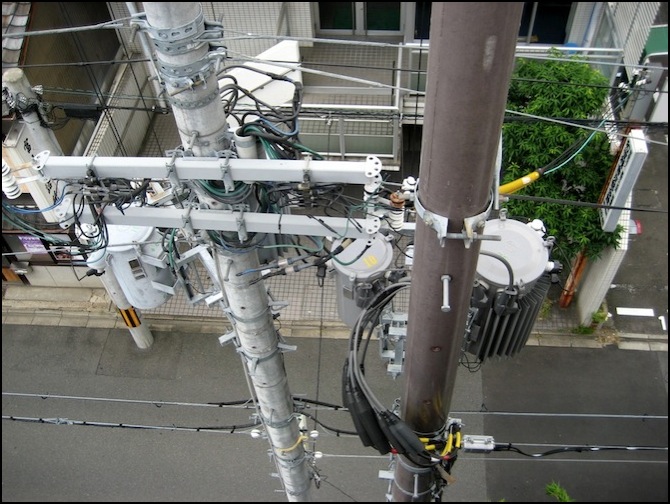
Electrical Poles in Kyoto (2009)
Photographer: eldon2042
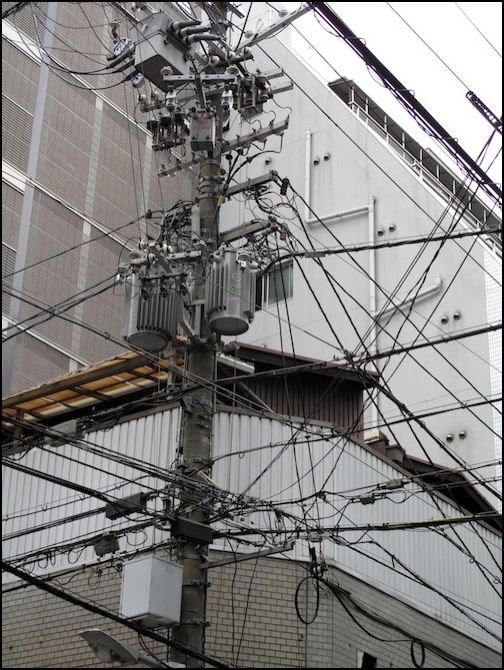
Electrical Pole in Osaka (2009)
Photographer: dugspr

Transformers (and a streetlight) on a Tōkyō street (2009)
Photographer: marc0047
High-Voltage Utility Systems
In electrical systems, very high voltage power is transmitted long distances, and that voltage (often 100,000 volts or more) requires large distances for safety, so tall “transmission line” towers are used. The higher the voltage, the taller the tower (tall towers may also be required to get over obstacles). These connect to substations where transformers step the voltage down to a level that can be passed through the “distribution system”, in underground conduit or atop ordinary roadside poles (often to around 10,000 volts, which still requires a fair bit of space around the wires). And yet more transformers (either mounted on poles or in vaults under or near buildings) step it down to usable voltages (typically 110 to 480 volts).
Note: one Japanese Wikipedia page suggests that urban distribution systems may operate at 22,000 volts or even 67,500 volts AC.
In addition to transformers, substations will also contain “switchgear”, equipment that can interrupt or switch very high voltages. This can allow a distribution system to be fed from two different sources, so that power companies can take one offline for maintenance or repair, and this equipment also provides protection against damage to transformers from lightning and other factors. Usually these facilities are outdoors in a fenced compound, and are more likely to be located on the edges of cities than centrally (this isn’t always true). The TEPCO substation below appears to have some kind of staffed building (note the window). Many substations are unstaffed, but sometimes an office building or similar facility will be located with one. And I’ve seen a few in the Tōkyō area (you can find power lines on Google Earth by looking along rivers to see the shadows of the wires crossing them) that were obviously offices of some kind, with parking lots for a number of trucks.
The fencing around Tōkyō substations is typically concrete panels rising up five or six feet (1.5 - 2m), probably to protect passerby as much as keep people out. Sometimes there will be additional chain-link, barbed-wire or metal fencing atop or inside those walls. Inside the walls will be gravel, with concrete pads for equipment. The TEPCO facility below seems exceptional in having grass inside the fence (I’ve seen similar around buildings, but rarely under the electrical gantries, inside the fence).
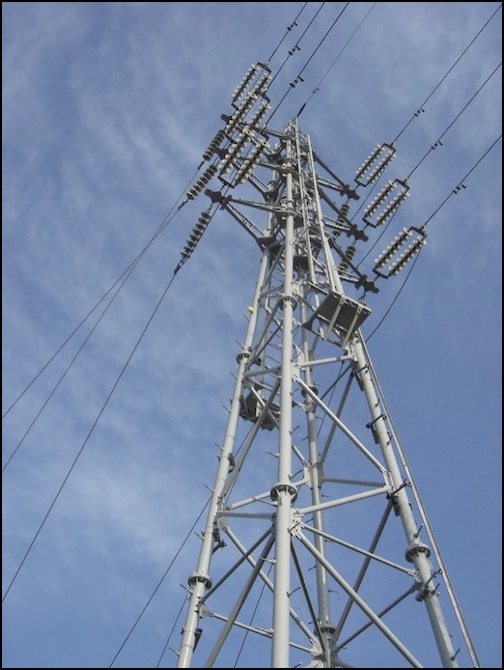
Power Line (2005)
Photographer: A is for Angie
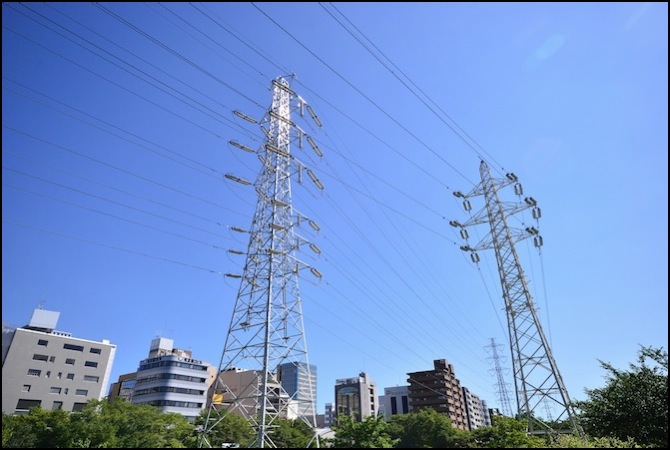
Utility Lines in Shin-Yokohama (2011) - per the photographer, the right tower belongs to JR East
Photographer: ykanazawa1999
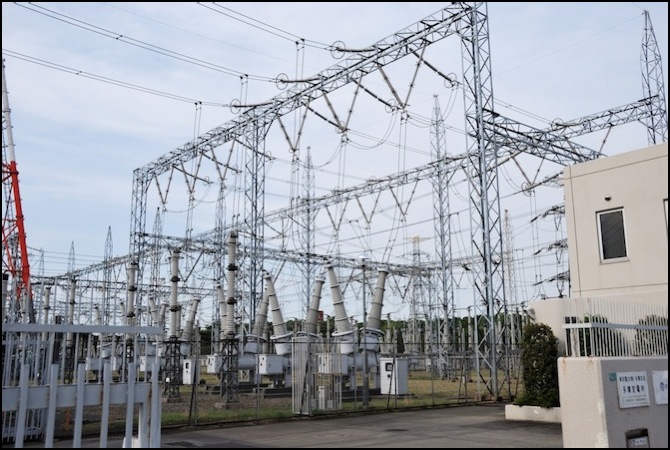
TEPCO Tama Substation (2010)
Photographer: ykanazawa1999
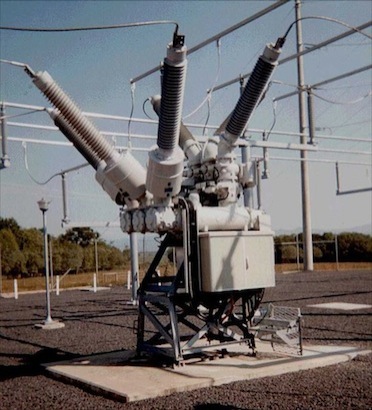
145 kV Switchgear (circuit breaker) - Australia (2007)
Photographer: Dingy
Railway Utility Lines
Electric railways, particularly those using DC power which is limited in the distance it can be transmitted, need to have periodic transformers and rectifiers to feed the catenary (overhead wire used by the trains). Typically these are fed power from high-voltage AC lines that run along the same structure that holds the catenary, and these in turn are fed from larger transformers powered by really high voltage lines (like the JR East transmission line seen above). The Nanbu image below shows what appears to be a higher-than-usual-voltage line paralleling the tracks. A more common version is seen in the image below (the two heavy wires on the right-side pole, hung above the other wires).
In most of the ones I’ve found so far, the transformers are housed in long, narrow two- or three-story buildings paralleling the tracks rather than being outdoors, the way transformers in electrical substations I’m familiar with would be. This may be a result of the limited space in an urban area (a larger open space might be required around them for safety) and the limited land allocated to railway rights of way.
Both buildings shown here would appear to be normally unstaffed (no windows, although the Etchujima one does appear to have a small barred window on the lower left corner). I have found a few large fenced compounds, but even in those there are often buildings rather than outdoor systems.
You can find these fairly easily using Google Earth, as their presence is usually given away by larger-than-usual metal structures spanning the tracks. They seem to be located about every 2 km, which is in line with what I’ve read about DC power systems for trains (Shinkansen facilities can be much farther apart since the catenary uses AC power). Unfortunately good pictures of these are uncommon, mostly I’ve seen these in streetview images. Below are the only two good photos I’ve found so far.
Note: transformers change voltage, but only work on AC. Rectifiers turn AC into DC. And Japanese trains other than Shinkansen typically run on DC of 1500 volts.
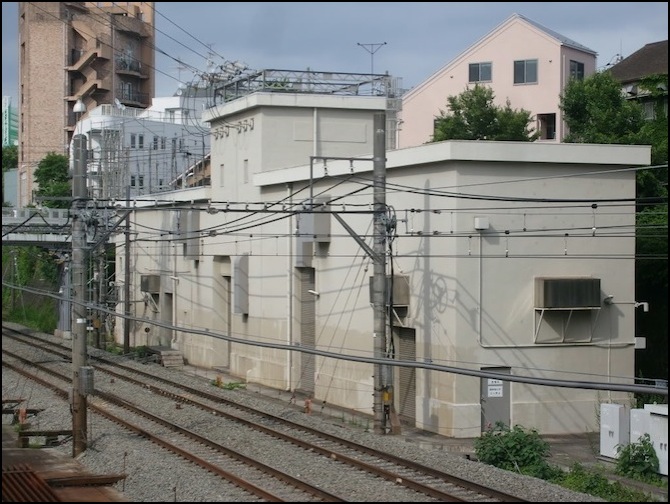
Substation on the Tokyu-Toyoko Line (2007) - originally posted to a thread on JNS Forum
Photographer: Grant “gmat” Matsuoka (Copyright, used by permission)
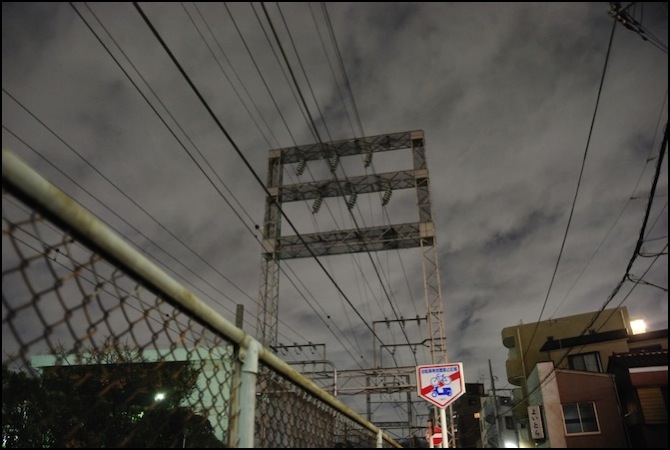
Power Line above JR Nanbu Line (2010)
Photographer: ykanazawa1999
Although you can’t see it in this photo, the left side of the building has a couple of large truck-sized roll-up doors for access, and a steel gantry with wiring coming out, crossing the paved area, and going down to the catenary of the Keiyo line, which is emerging from the underground tunnel beneath the Sumida river to Tōkyō station. This photo was taken a few months after a fire, which is why there appears to be temporary wiring exiting through a doorway and down a makeshift scaffold.
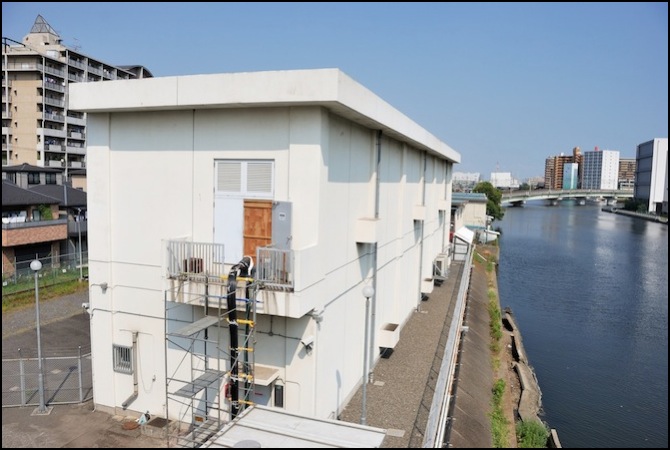
Etchujima Power Transformer Facility - JR Keiyo line (2009)
Photographer: ykanazawa1999




